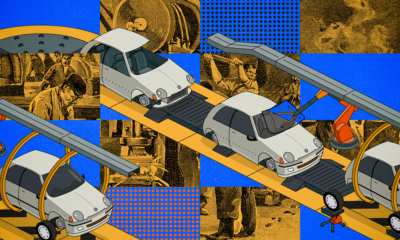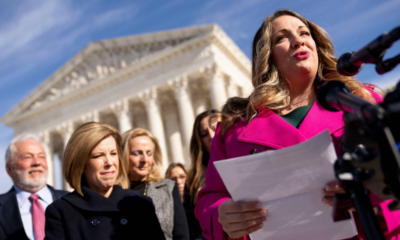Tech News
Marvell Launches Products, Technology and Partnerships at OFC 2024 to Scale Optical Technology for Accelerated … – PR Newswire
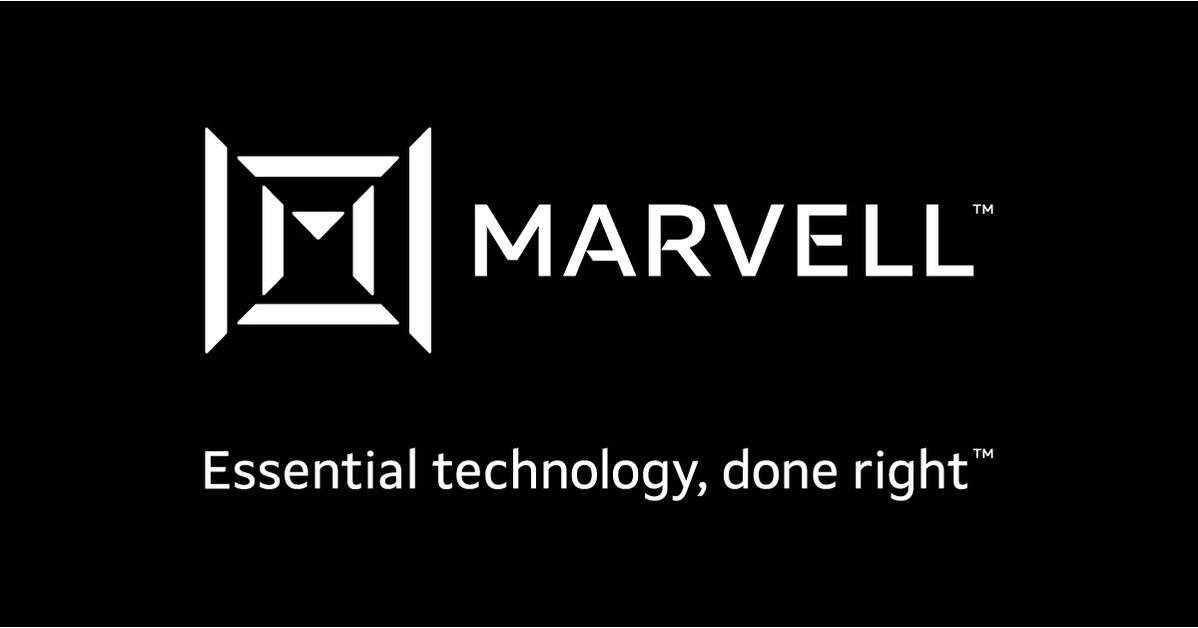
Searching for your content…
In-Language News
Contact Us
888-776-0942
from 8 AM – 10 PM ET
News provided by
26 Mar, 2024, 11:08 ET
Share this article
Marvell to showcase connectivity optimized for diverse architectures and use cases to meet exploding demand for bandwidth
SANTA CLARA, Calif., March 26, 2024 /PRNewswire/ — Marvell Technology, Inc. (NASDAQ: MRVL), a leader in data infrastructure semiconductor solutions, will outline its broad-ranging strategy to optimize optical technology to meet the rising performance and power requirements of AI and cloud data centers at OFC 2024, taking place this week in San Diego, California.
Marvell CEO and Chairman, Matt Murphy, and EVP and GM of Cloud Optics, Dr. Loi Nguyen, among others, will discuss the driving forces behind the growth of optical as well as Marvell’s ideas for enhancing optical PAM4 DSPs, coherent DSPs, silicon photonics, and other optical technologies for data centers to serve an expanding range of architectures, applications, use cases, performance characteristics, and customer profiles.
Products and use cases being unveiled at OFC include:
“Over the last two decades, optical data rates have increased 1000x while energy per bit has declined 100x3, and in the process transformed data infrastructure and enabled the rise of services like streaming media, cloud computing, smartphones and AI,” said Dr. Radha Nagarajan, senior vice president and chief technology officer, Optical Platforms at Marvell and the 2024 recipient of the David Richardson Medal for significant contributions to optical engineering. “The industry is now entering a new chapter and Marvell is looking forward to collaborating with its partners in extending the horizons of this far-reaching technology.”
About Marvell
To deliver the data infrastructure technology that connects the world, we’re building solutions on the most powerful foundation: our partnerships with our customers. Trusted by the world’s leading technology companies for over 25 years, we move, store, process and secure the world’s data with semiconductor solutions designed for our customers’ current needs and future ambitions. Through a process of deep collaboration and transparency, we’re ultimately changing the way tomorrow’s enterprise, cloud, automotive, and carrier architectures transform—for the better.
Marvell and the M logo are trademarks of Marvell or its affiliates. Please visit www.marvell.com for a complete list of Marvell trademarks. Other names and brands may be claimed as the property of others.
This press release contains forward-looking statements within the meaning of the federal securities laws that involve risks and uncertainties. Forward-looking statements include, without limitation, any statement that may predict, forecast, indicate or imply future events, results or achievements. Actual events, results or achievements may differ materially from those contemplated in this press release. Forward-looking statements are only predictions and are subject to risks, uncertainties and assumptions that are difficult to predict, including those described in the “Risk Factors” section of our Annual Reports on Form 10-K, Quarterly Reports on Form 10-Q and other documents filed by us from time to time with the SEC. Forward-looking statements speak only as of the date they are made. Readers are cautioned not to put undue reliance on forward-looking statements, and no person assumes any obligation to update or revise any such forward-looking statements, whether as a result of new information, future events or otherwise.
For further information, contact:
Michael Kanellos
[email protected]
SOURCE Marvell
Marvell Technology, Inc. (NASDAQ: MRVL), a leader in data infrastructure semiconductor solutions, today announced Marvell® Nova 2, the industry’s…
Marvell Technology, Inc. (NASDAQ: MRVL), a leader in data infrastructure semiconductor solutions, will demonstrate its 3D Silicon Photonics (SiPho)…
Semiconductors
Computer & Electronics
Artificial Intelligence
Aerospace, Defense
Tech News
Does technology help or hurt employment? | MIT News | Massachusetts Institute of Technology – MIT News
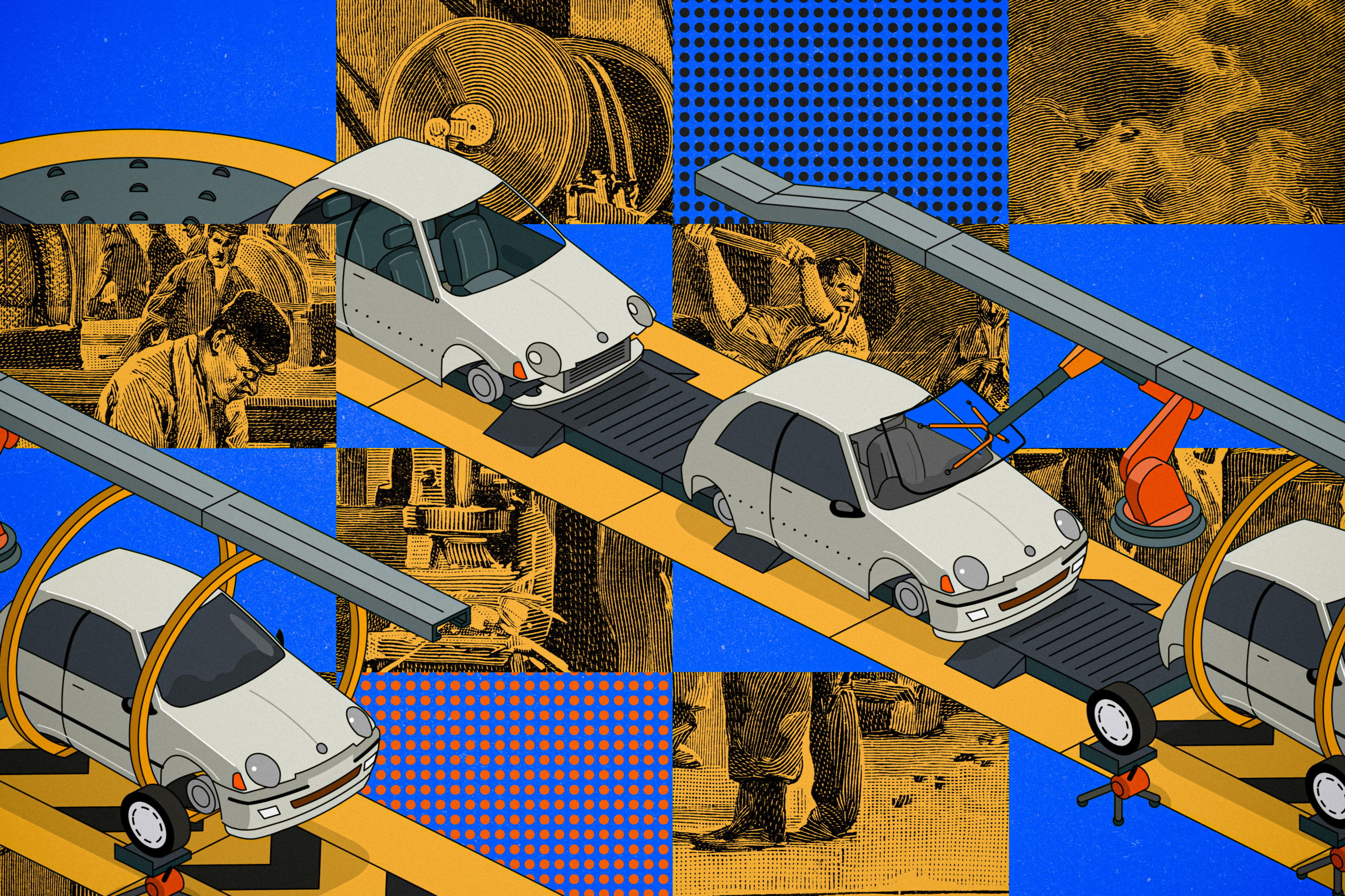
Suggestions or feedback?
Images for download on the MIT News office website are made available to non-commercial entities, press and the general public under a Creative Commons Attribution Non-Commercial No Derivatives license. You may not alter the images provided, other than to crop them to size. A credit line must be used when reproducing images; if one is not provided below, credit the images to “MIT.”
This is part 2 of a two-part MIT News feature examining new job creation in the U.S. since 1940, based on new research from Ford Professor of Economics David Autor. Part 1 is available here.
Ever since the Luddites were destroying machine looms, it has been obvious that new technologies can wipe out jobs. But technical innovations also create new jobs: Consider a computer programmer, or someone installing solar panels on a roof.
Overall, does technology replace more jobs than it creates? What is the net balance between these two things? Until now, that has not been measured. But a new research project led by MIT economist David Autor has developed an answer, at least for U.S. history since 1940.
The study uses new methods to examine how many jobs have been lost to machine automation, and how many have been generated through “augmentation,” in which technology creates new tasks. On net, the study finds, and particularly since 1980, technology has replaced more U.S. jobs than it has generated.
“There does appear to be a faster rate of automation, and a slower rate of augmentation, in the last four decades, from 1980 to the present, than in the four decades prior,” says Autor, co-author of a newly published paper detailing the results.
However, that finding is only one of the study’s advances. The researchers have also developed an entirely new method for studying the issue, based on an analysis of tens of thousands of U.S. census job categories in relation to a comprehensive look at the text of U.S. patents over the last century. That has allowed them, for the first time, to quantify the effects of technology over both job loss and job creation.
Previously, scholars had largely just been able to quantify job losses produced by new technologies, not job gains.
“I feel like a paleontologist who was looking for dinosaur bones that we thought must have existed, but had not been able to find until now,” Autor says. “I think this research breaks ground on things that we suspected were true, but we did not have direct proof of them before this study.”
The paper, “New Frontiers: The Origins and Content of New Work, 1940-2018,” appears in the Quarterly Journal of Economics. The co-authors are Autor, the Ford Professor of Economics; Caroline Chin, a PhD student in economics at MIT; Anna Salomons, a professor in the School of Economics at Utrecht University; and Bryan Seegmiller SM ’20, PhD ’22, an assistant professor at the Kellogg School of Northwestern University.
Automation versus augmentation
The study finds that overall, about 60 percent of jobs in the U.S. represent new types of work, which have been created since 1940. A century ago, that computer programmer may have been working on a farm.
To determine this, Autor and his colleagues combed through about 35,000 job categories listed in the U.S. Census Bureau reports, tracking how they emerge over time. They also used natural language processing tools to analyze the text of every U.S. patent filed since 1920. The research examined how words were “embedded” in the census and patent documents to unearth related passages of text. That allowed them to determine links between new technologies and their effects on employment.
“You can think of automation as a machine that takes a job’s inputs and does it for the worker,” Autor explains. “We think of augmentation as a technology that increases the variety of things that people can do, the quality of things people can do, or their productivity.”
From about 1940 through 1980, for instance, jobs like elevator operator and typesetter tended to get automated. But at the same time, more workers filled roles such as shipping and receiving clerks, buyers and department heads, and civil and aeronautical engineers, where technology created a need for more employees.
From 1980 through 2018, the ranks of cabinetmakers and machinists, among others, have been thinned by automation, while, for instance, industrial engineers, and operations and systems researchers and analysts, have enjoyed growth.
Ultimately, the research suggests that the negative effects of automation on employment were more than twice as great in the 1980-2018 period as in the 1940-1980 period. There was a more modest, and positive, change in the effect of augmentation on employment in 1980-2018, as compared to 1940-1980.
“There’s no law these things have to be one-for-one balanced, although there’s been no period where we haven’t also created new work,” Autor observes.
What will AI do?
The research also uncovers many nuances in this process, though, since automation and augmentation often occur within the same industries. It is not just that technology decimates the ranks of farmers while creating air traffic controllers. Within the same large manufacturing firm, for example, there may be fewer machinists but more systems analysts.
Relatedly, over the last 40 years, technological trends have exacerbated a gap in wages in the U.S., with highly educated professionals being more likely to work in new fields, which themselves are split between high-paying and lower-income jobs.
“The new work is bifurcated,” Autor says. “As old work has been erased in the middle, new work has grown on either side.”
As the research also shows, technology is not the only thing driving new work. Demographic shifts also lie behind growth in numerous sectors of the service industries. Intriguingly, the new research also suggests that large-scale consumer demand also drives technological innovation. Inventions are not just supplied by bright people thinking outside the box, but in response to clear societal needs.
The 80 years of data also suggest that future pathways for innovation, and the employment implications, are hard to forecast. Consider the possible uses of AI in workplaces.
“AI is really different,” Autor says. “It may substitute some high-skill expertise but may complement decision-making tasks. I think we’re in an era where we have this new tool and we don’t know what’s good for. New technologies have strengths and weaknesses and it takes a while to figure them out. GPS was invented for military purposes, and it took decades for it to be in smartphones.”
He adds: “We’re hoping our research approach gives us the ability to say more about that going forward.”
As Autor recognizes, there is room for the research team’s methods to be further refined. For now, he believes the research open up new ground for study.
“The missing link was documenting and quantifying how much technology augments people’s jobs,” Autor says. “All the prior measures just showed automation and its effects on displacing workers. We were amazed we could identify, classify, and quantify augmentation. So that itself, to me, is pretty foundational.”
Support for the research was provided, in part, by The Carnegie Corporation; Google; Instituut Gak; the MIT Work of the Future Task Force; Schmidt Futures; the Smith Richardson Foundation; and the Washington Center for Equitable Growth.
Fast Company reporter Shalene Gupta spotlights new research by Prof. David Autor that finds “about 60% of jobs in 2018 did not exist 1940. Since 1940, the bulk of new jobs has shifted from middle-class production and clerical jobs to high-paid professional jobs and low-paid service jobs.” Additionally, the researchers uncovered evidence that “automation eroded twice as many jobs from 1980 to 2018 as it had from 1940 to 1980. While augmentation did add some jobs to the economy, it was not as many as the ones lost by automation.”
Read full story →
Read full story →
Read full story →
Read full story →
Read full story →
Read full story →
This website is managed by the MIT News Office, part of the Institute Office of Communications.
Massachusetts Institute of Technology
77 Massachusetts Avenue, Cambridge, MA, USA
Tech News
Reaction to Supreme Court decision in web design case – Spectrum News NY1
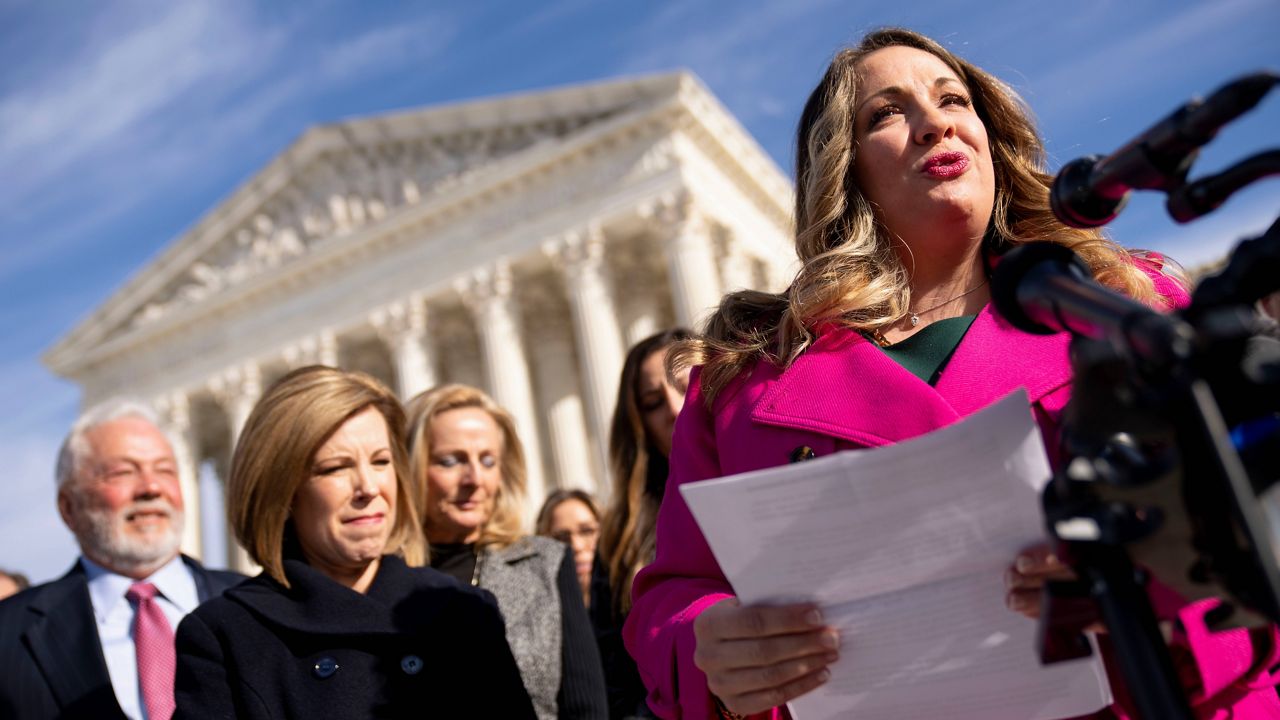
Get the best experience and stay connected to your community with our Spectrum News app. Learn More
Continue in Browser
Get hyperlocal forecasts, radar and weather alerts.
Please enter a valid zipcode.
Save
Democrats and LGBTQ+ advocates on Friday condemned a Supreme Court decision siding with a Colorado web designer who argued she should be able to refuse to build wedding websites for same-sex couples. Republicans, meanwhile, praised the ruling as a victory for religious freedom.
In a 6-3 decision, the court ruled that a Colorado law that forbids businesses open to the public from discriminating against gay people violated web designer Lorie Smith’s free-speech rights. Smith, who owns the graphic design firm 303 Creative, argued that working with same-sex couples would go against her Christian faith.
President Joe Biden called the ruling “disappointing” because he said it undermines that “no person should face discrimination simply because of who they are or who they love.”
While the decision only applies to businesses that perform creative services, Biden said he fears it could “invite more discrimination against LGBTQI+ Americans.”
The president added that his administration remains committed to working with federal law enforcement to protect Americans from discrimination based on gender identity or sexual orientation and will work with states to combat attempts to roll back civil rights protections.
“When one group’s dignity and equality are threatened, the promise of our democracy is threatened and we all suffer,” Biden said.
Senate Majority Leader Chuck Schumer, D-N.Y., called the ruling “a giant step backward for human rights and equal protection in the United States.”
“Refusing service based on whom someone loves is just as bigoted and hateful as refusing service because of race or religion,” he said in a statement. “And this is bigotry that the vast majority of Americans find completely unacceptable.”
Kelley Robinson, president of the Human Rights Campaign, an LGBTQ+ advocacy group, called the decision “dangerous” because it will give “some businesses the power to discriminate against people simply because of who we are.”
“People deserve to have commercial spaces that are safe and welcoming,” she said. “This decision continues to affirm how radical and out-of-touch this Court is.”
Rep. Robert Garcia, D-Calif., who is openly gay, called it “a very dark day for our community.”
“This is a devastating ruling for the LGBTQ+ community,” he said in an interview with MSNBC. “We just spent a month celebrating, trying to uplift pride. It’s already a very dark time for this community, where you have attacks happening on our community every day in Congress, in state legislatures. And to have this happen by a true extreme activist court to roll back a key protection against discriminating our community is shameful.
Rep. Bonnie Watson Coleman, D-N.J., also attacked the conservative-majority court while noting the case involved a hypothetical situation. Smith has never designed wedding websites. She argued she wants to expand her business but was concerned about running afoul of the Colorado law.
“This SCOTUS is out of control,” Coleman tweeted. “It’s now taking made up cases in order to push a radical agenda that is out of touch with the vast majority of the American people.”
Rep. Ayanna Pressley, D-Mass., meanwhile, directed a supportive tweet toward the LGBTQ community.
“Despite yet another callous ruling from this extreme Supreme Court, I want our LGBTQ siblings to know: We see you. We love you. We won’t stop fighting for you,” she wrote.
But Kristen Waggoner, president and CEO of the Alliance Defending Freedom, a conservative Christian legal advocacy group, said in a statement the Supreme Court made the right decision. ADF attorneys, including Waggoner, represented Smith in the case.
“The U.S. Supreme Court rightly reaffirmed that the government can’t force Americans to say things they don’t believe,” Waggoner said. “The court reiterated that it’s unconstitutional for the state to eliminate from the public square ideas it dislikes, including the belief that marriage is the union of husband and wife.
“Disagreement isn’t discrimination, and the government can’t mislabel speech as discrimination to censor it,” she added.
Sen. Ted Cruz, R-Texas, said laws should not compel business owners to use their speech in ways that contradict their faith.
“This law wasn’t just a threat to Christians either,” Cruz said in a statement. “Should a Muslim artist be compelled by the government to draw the image of Muhammed? Should Jewish artists be forced to create art that is antisemitic?”
On Twitter, Sen. Lindsey Graham, R-S.C., added, “Participating in commerce does not mean you should have to abandon your faith and individuals should not be compelled, by government, to act counter to their faith.”
Former Vice President Mike Pence, who is running for the Republican presidential nomination in 2024, said in a tweet, “Today Faith Won!”
“Freedom of Religion is the bedrock of our Constitution,” he wrote. “Today’s decision by the Supreme Court is a victory for the Religious Liberty of every American of every faith to live, work and worship according to their faith and conscience!
And former Ambassador to the United Nations Nikki Haley, a Republican who is also running for president, said she’s “glad we have a Supreme Court that respects our Constitution.”
“Unlike in other countries, we don’t force our citizens to express themselves in ways that conflict with their religious beliefs. It’s called the First Amendment,” Haley said in a statement.
Tech News
The man named in the Supreme Court's gay rights ruling says he didn't request a wedding website – The Associated Press

Copyright 2024 The Associated Press. All Rights Reserved.
FILE – Lorie Smith, a Christian graphic artist and website designer in Colorado, appears outside the Supreme Court in Washington, Monday, Dec. 5, 2022, after her case was heard by the Court. In a defeat for gay rights, the Supreme Court’s conservative majority ruled Friday, June 30, 2023, Smith who wants to design wedding websites can refuse to work with same-sex couples (AP Photo/Andrew Harnik, File)
FILE – Lorie Smith, a Christian graphic artist and website designer in Colorado, right, accompanied by her lawyer, Kristen Waggoner of the Alliance Defending Freedom, second from left, speaks outside the Supreme Court in Washington, Monday, Dec. 5, 2022, after her case was heard before the Supreme Court. In a defeat for gay rights, the Supreme Court’s conservative majority ruled Friday, June 30, 2023, Smith who wants to design wedding websites can refuse to work with same-sex couples. (AP Photo/Andrew Harnik, File)
FILE – Lorie Smith, a Christian graphic artist and website designer in Colorado, speaks to supporters outside the Supreme Court in Washington, Monday, Dec. 5, 2022, after having her case heard by the Court. The Supreme Court’s conservative majority has ruled a Christian graphic artist who wants to design wedding websites can refuse to work with same-sex couples. The decision is a defeat for gay rights. The court ruled 6-3 on Friday, June 30, 2023, for designer Lorie Smith despite a Colorado law barring discrimination based on sexual orientation, race, gender and other characteristics. (AP Photo/Andrew Harnik, File)
FILE – Web designer Lorie Smith is shown in her office on Nov. 7, 2022, in the southwest part of Littleton, Colo. The Supreme Court’s conservative majority has ruled a Christian graphic artist who wants to design wedding websites can refuse to work with same-sex couples. The decision is a defeat for gay rights. The court ruled 6-3 on Friday, June 30, 2023, for designer Lorie Smith despite a Colorado law barring discrimination based on sexual orientation, race, gender and other characteristics. (AP Photo/David Zalubowski, File)
FILE – Lorie Smith, a Christian graphic artist and website designer in Colorado, appears outside the Supreme Court in Washington, Monday, Dec. 5, 2022, after her case was heard by the Court. In a defeat for gay rights, the Supreme Court’s conservative majority ruled Friday, June 30, 2023, Smith who wants to design wedding websites can refuse to work with same-sex couples (AP Photo/Andrew Harnik, File)
FILE – Lorie Smith, a Christian graphic artist and website designer in Colorado, appears outside the Supreme Court in Washington, Monday, Dec. 5, 2022, after her case was heard by the Court. In a defeat for gay rights, the Supreme Court’s conservative majority ruled Friday, June 30, 2023, Smith who wants to design wedding websites can refuse to work with same-sex couples (AP Photo/Andrew Harnik, File)
FILE – Lorie Smith, a Christian graphic artist and website designer in Colorado, right, accompanied by her lawyer, Kristen Waggoner of the Alliance Defending Freedom, second from left, speaks outside the Supreme Court in Washington, Monday, Dec. 5, 2022, after her case was heard before the Supreme Court. In a defeat for gay rights, the Supreme Court’s conservative majority ruled Friday, June 30, 2023, Smith who wants to design wedding websites can refuse to work with same-sex couples. (AP Photo/Andrew Harnik, File)
FILE – Lorie Smith, a Christian graphic artist and website designer in Colorado, right, accompanied by her lawyer, Kristen Waggoner of the Alliance Defending Freedom, second from left, speaks outside the Supreme Court in Washington, Monday, Dec. 5, 2022, after her case was heard before the Supreme Court. In a defeat for gay rights, the Supreme Court’s conservative majority ruled Friday, June 30, 2023, Smith who wants to design wedding websites can refuse to work with same-sex couples. (AP Photo/Andrew Harnik, File)
FILE – Lorie Smith, a Christian graphic artist and website designer in Colorado, speaks to supporters outside the Supreme Court in Washington, Monday, Dec. 5, 2022, after having her case heard by the Court. The Supreme Court’s conservative majority has ruled a Christian graphic artist who wants to design wedding websites can refuse to work with same-sex couples. The decision is a defeat for gay rights. The court ruled 6-3 on Friday, June 30, 2023, for designer Lorie Smith despite a Colorado law barring discrimination based on sexual orientation, race, gender and other characteristics. (AP Photo/Andrew Harnik, File)
FILE – Lorie Smith, a Christian graphic artist and website designer in Colorado, speaks to supporters outside the Supreme Court in Washington, Monday, Dec. 5, 2022, after having her case heard by the Court. The Supreme Court’s conservative majority has ruled a Christian graphic artist who wants to design wedding websites can refuse to work with same-sex couples. The decision is a defeat for gay rights. The court ruled 6-3 on Friday, June 30, 2023, for designer Lorie Smith despite a Colorado law barring discrimination based on sexual orientation, race, gender and other characteristics. (AP Photo/Andrew Harnik, File)
FILE – Web designer Lorie Smith is shown in her office on Nov. 7, 2022, in the southwest part of Littleton, Colo. The Supreme Court’s conservative majority has ruled a Christian graphic artist who wants to design wedding websites can refuse to work with same-sex couples. The decision is a defeat for gay rights. The court ruled 6-3 on Friday, June 30, 2023, for designer Lorie Smith despite a Colorado law barring discrimination based on sexual orientation, race, gender and other characteristics. (AP Photo/David Zalubowski, File)
FILE – Web designer Lorie Smith is shown in her office on Nov. 7, 2022, in the southwest part of Littleton, Colo. The Supreme Court’s conservative majority has ruled a Christian graphic artist who wants to design wedding websites can refuse to work with same-sex couples. The decision is a defeat for gay rights. The court ruled 6-3 on Friday, June 30, 2023, for designer Lorie Smith despite a Colorado law barring discrimination based on sexual orientation, race, gender and other characteristics. (AP Photo/David Zalubowski, File)
DENVER (AP) — A Colorado web designer who the U.S. Supreme Court ruled Friday could refuse to make wedding websites for gay couples cited a request from a man who says he never asked to work with her.
The request in dispute, from a person identified as “Stewart,” wasn’t the basis for the federal lawsuit filed preemptively seven years ago by web designer Lorie Smith, before she started making wedding websites. But as the case advanced, it was referenced by her attorneys when lawyers for the state of Colorado pressed Smith on whether she had sufficient grounds to sue.
The revelation distracts from Smith’s victory at a time when she might have been basking in her win, which is widely considered a setback for gay rights.
Smith named Stewart — and included a website service request from him, listing his phone number and email address in 2017 court documents. But Stewart told The Associated Press he never submitted the request and didn’t know his name was invoked in the lawsuit until he was contacted this week by a reporter from The New Republic, which first reported his denial.
“I was incredibly surprised given the fact that I’ve been happily married to a woman for the last 15 years,” said Stewart, who declined to give his last name for fear of harassment and threats. His contact information, but not his last name, were listed in court documents.
He added that he was a designer and “could design my own website if I need to” — and was concerned no one had checked into the validity of the request cited by Smith until recently.
Smith’s lawyer, Kristen Waggoner, said at a Friday news conference that the wedding request naming Stewart was submitted through Smith’s website and denied it was fabricated.
She suggested it could have been a troll making the request, something that’s happened with other clients she has represented. In 2018 her client Colorado baker Jack Phillips won a partial U.S. Supreme Court victory after refusing to make a gay couple’s wedding cake, citing his Christian faith.
“It’s undisputed that the request was received,” Waggoner said. “Whether that was a troll and not a genuine request, or it was someone who was looking for that, is really irrelevant to the case.”
Colorado Attorney General Phil Weiser on Friday called the lawsuit a “made up case” because Smith wasn’t offering wedding website services when the suit was filed.
Weiser didn’t know the specifics of Stewart’s denial, but said the nation’s high court should not have addressed the lawsuit’s merits “without any basis in reality.”
About a month after the case was filed in federal court challenging an anti-discrimination law in Colorado, lawyers for the state said Smith had not been harmed by the law as they moved to dismiss the case.
Her lawyers maintained Smith did not have to be punished for violating the law before challenging it. In February 2017 they said even though she did not need a request in order to pursue the case, she had received one.
“Any claim that Lorie will never receive a request to create a custom website celebrating a same-sex ceremony is no longer legitimate because Lorie has received such a request,” they said.
Smith’s Supreme Court filings briefly mentioned she received at least one request to create a website celebrating the wedding of a same-sex couple. There did not appear to be any reference to the issue in the court’s decision.
Associated Press researcher Rhonda Shafner contributed to this report from New York.
Copyright 2024 The Associated Press. All Rights Reserved.
-

 General Knowledge2 years ago
General Knowledge2 years agoList of Indian States and Capital
-

 General Knowledge2 years ago
General Knowledge2 years agoList Of 400 Famous Books and Authors
-
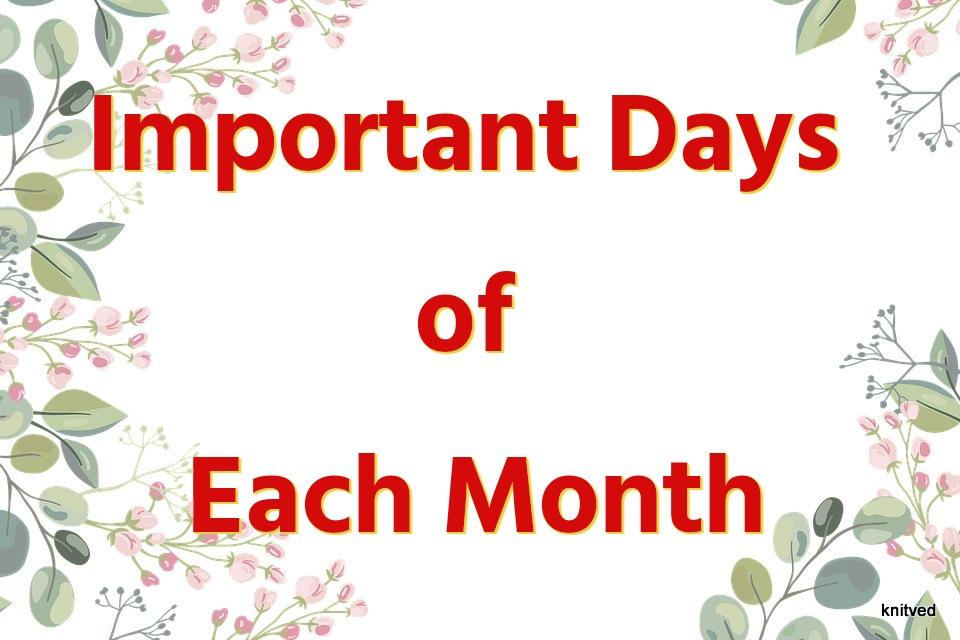
 Important Days4 years ago
Important Days4 years agoImportant Days of Each Month
-

 General Knowledge2 years ago
General Knowledge2 years agoCountries and their National Sports
-

 General Knowledge3 years ago
General Knowledge3 years agoCountry Capital and Currency
-

 Important Days3 years ago
Important Days3 years agoHoli
-

 General Knowledge2 years ago
General Knowledge2 years agoList of Indian President
-
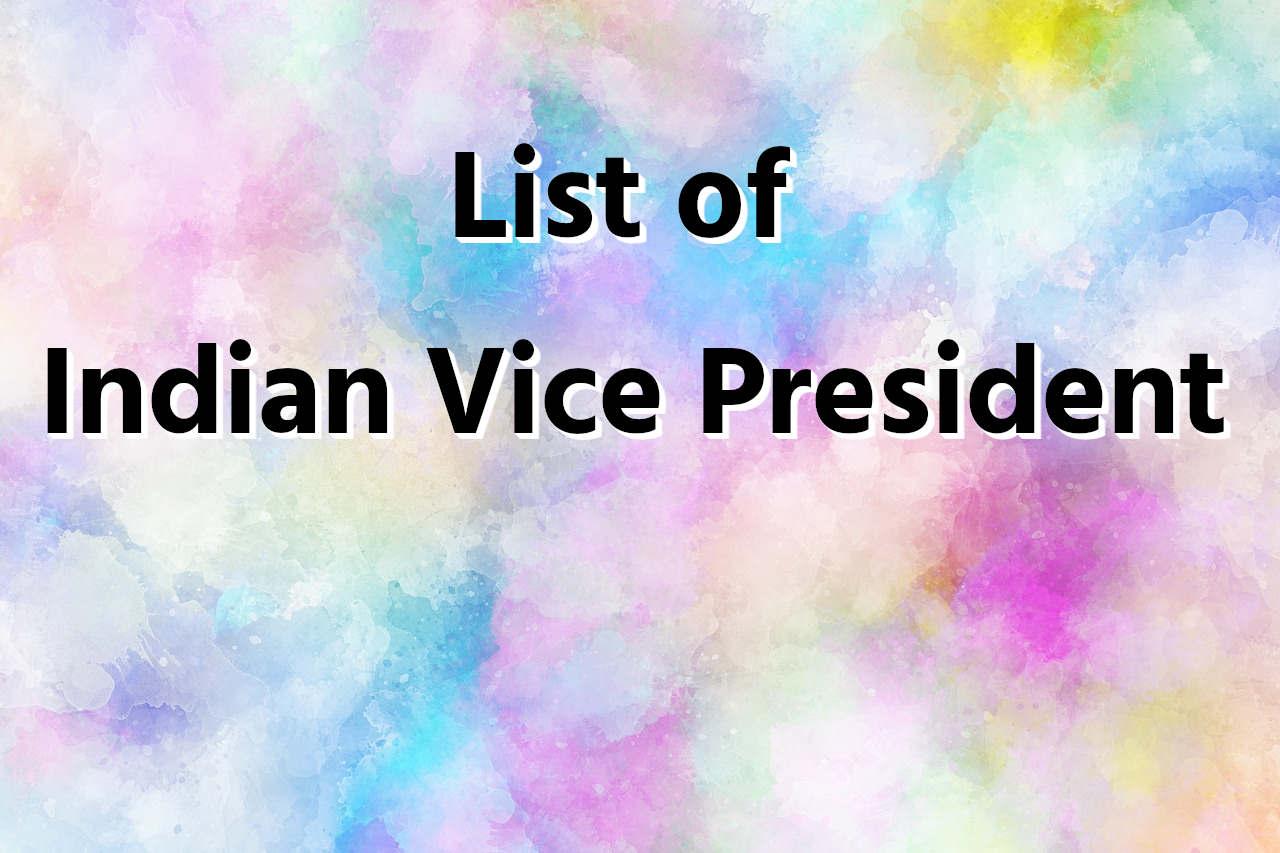
 General Knowledge2 years ago
General Knowledge2 years agoList of Indian Vice President


